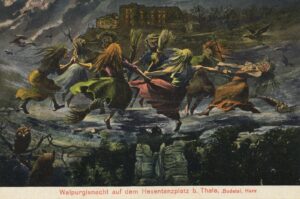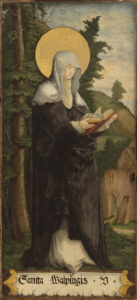We are halfway there!

While many are accustomed to celebrating all things spooky in October for Halloween, Germany’s holiday of Walpurgisnacht brings out witchy festivities half a year early.
Walpurgisnacht, also known as Walpurgis Night, Saint Walpurgis Night and Saint Walpurga’s Eve, is a celebration that takes place every year on the night of April 30

and into the early morning of May 1. Initially it was a night to pay tribute to the Abess Walpurga, who had been known in the 8th century for warding off pests, illness and witchcraft. She was celebrated on May 1 due to a medieval record indicating that as the date of her canonisation. Later, like many festivals and holidays, the celebration was influenced across Europe by pagan practices, local folklore and myths. While missionaries were trying to dispel pagans and their believed witchcraft, the pagans used the celebration of Saint Walpurga as a facade for their own enchanted welcoming of spring — it is only coincidence that the celebration of Saint Walpurga fell on this date and became a useful deception device for those she was working against.
Through time, Walpurgisnacht has shifted and it is in some ways seen as a “second Halloween.” Both Halloween and Walpurgisnacht have their origins in pagan celebrations that mark the changing of the seasons, and were important markers for when it was believed that the veil between the spirit world and ours was the thinnest.
Certain traditions remain from the medieval period, such as hanging sprigs of foliage, dressing up in costumes and leaving offerings of Ankenschnitt (bread spread with butter and honey) for phantom hounds. For centuries witches have pilgrimaged and held a large celebration on the Brocken, the highest of the Harz Mountains in north central Germany.
Now to the Brocken the witches ride;
The stubble is gold and the corn is green;
There is the carnival crew to be seen,
And Squire Urianus will come to preside.
So over the valleys our company floats,
With witches a-farting on stinking old goats.
From Faust, by Johann Wolfgang von Goethe.
Comments